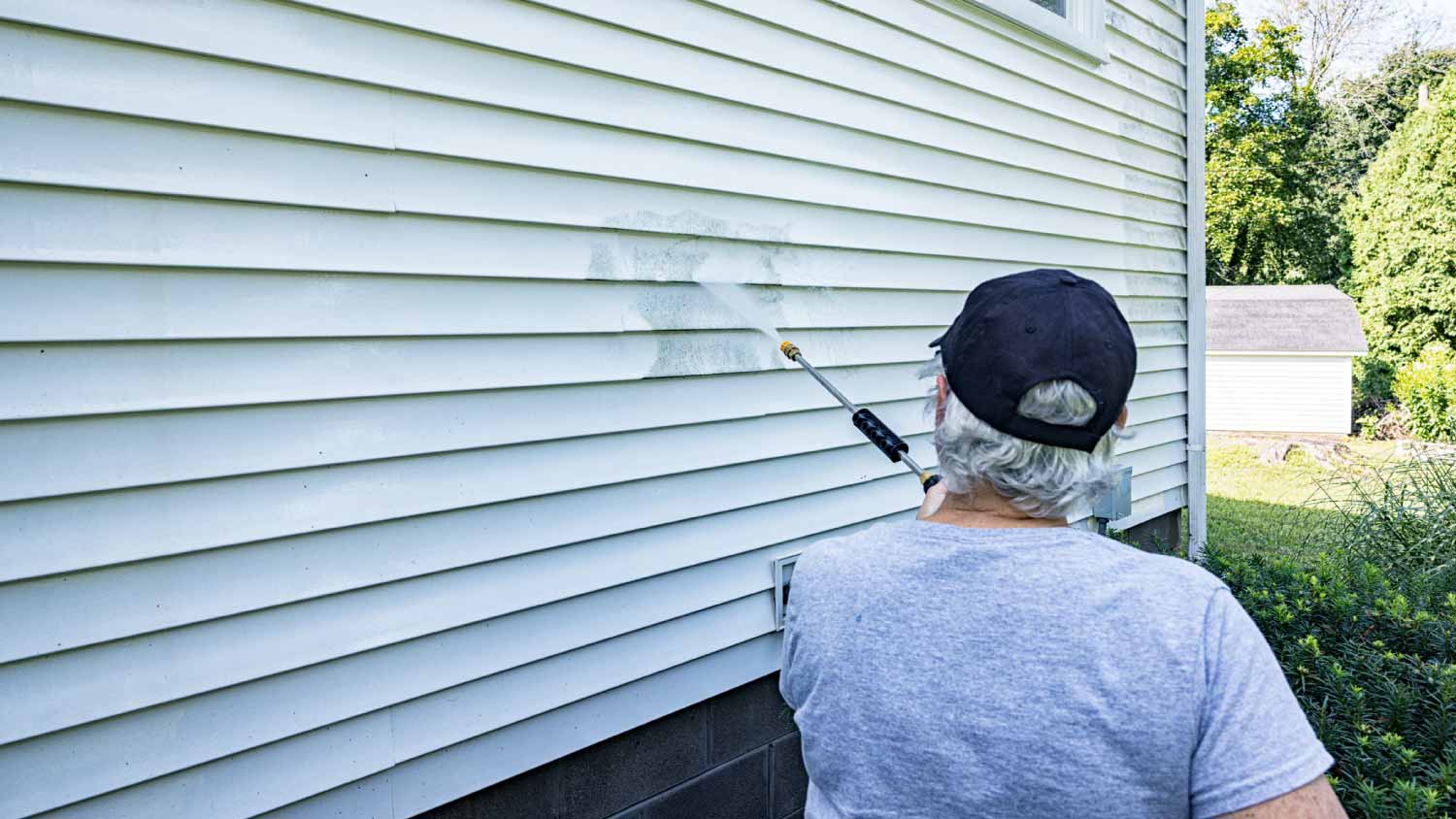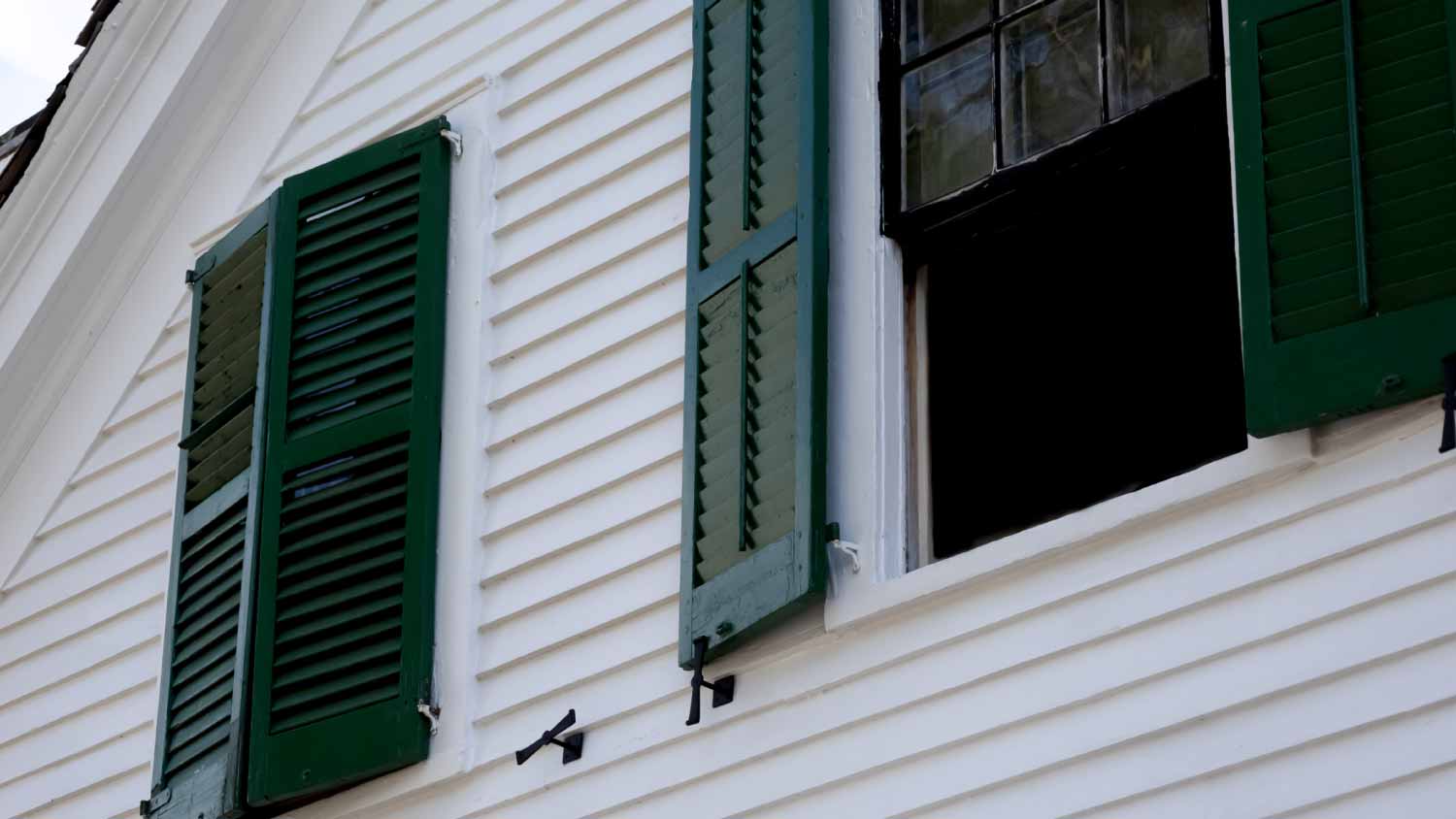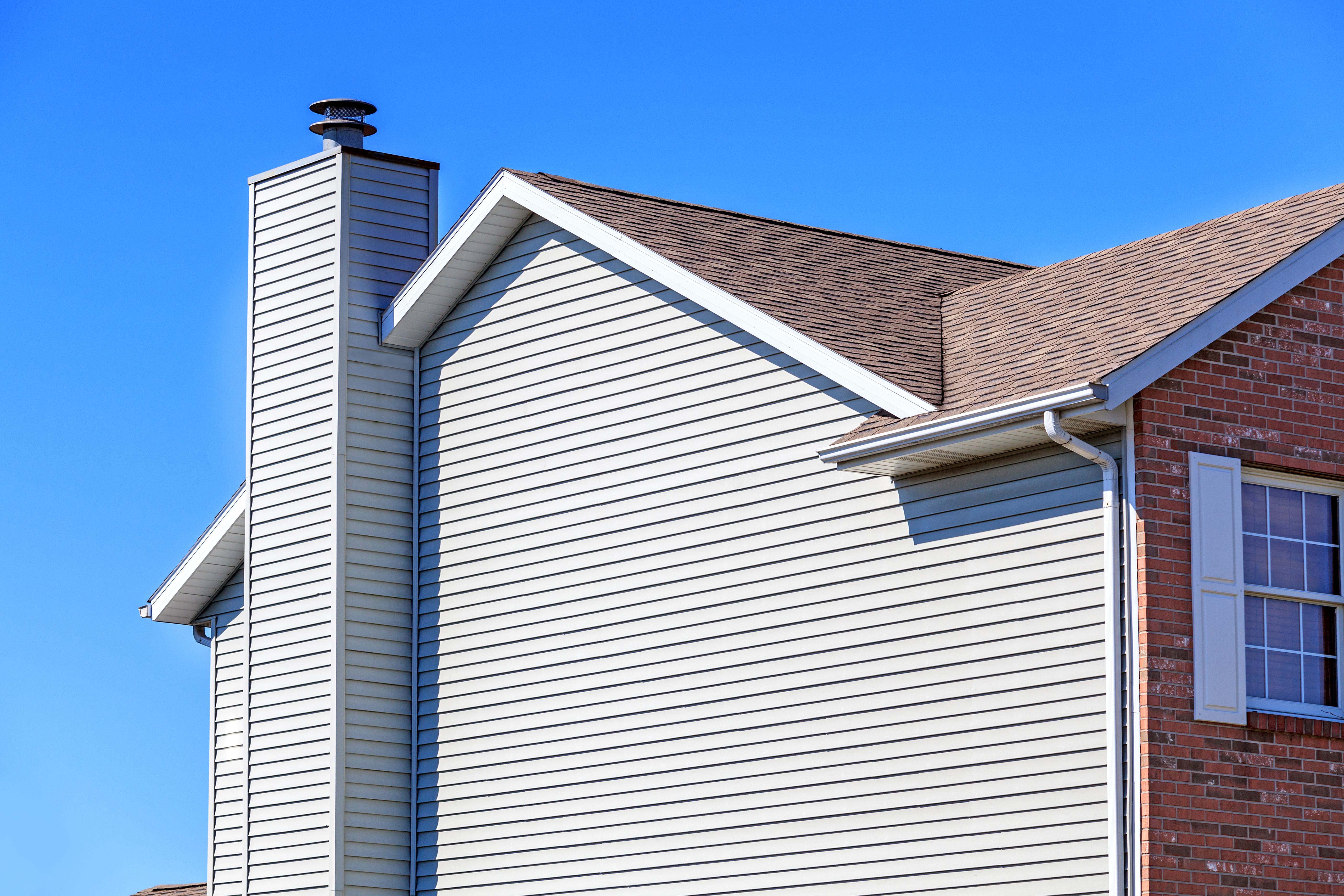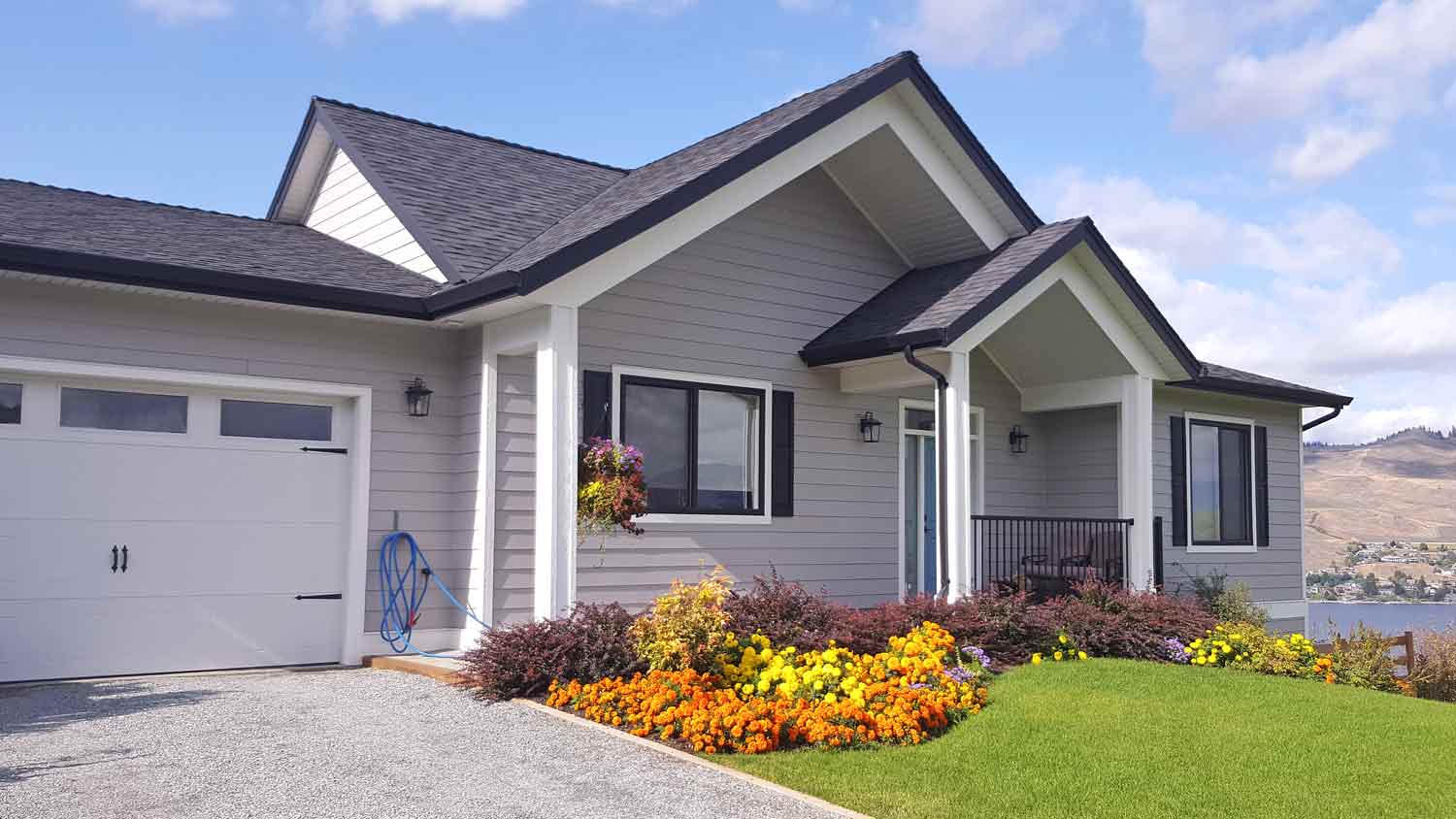
Fiber cement siding is durable, fire-resistant, and affordable. Learn more about fiber cement installation costs in Columbus, OH.
Wipe these wooden boards the right way


Clapboard siding can collect different types of grime, and a pro will know which cleaning product works best for your buildup.
The cost to pressure wash a house using a pro is around $310, but a DIY job might incur add-on costs, like renting a ladder and pressure washing equipment.
You could damage your siding while cleaning if it isn’t properly sealed, but a siding contractor will inspect it before cleaning and make repairs as needed.
Clapboard siding, or lap siding, is a classic style of overlapping exterior boards, and it’s important to learn how to clean clapboard siding because it can become dingy with built-up dust and grime.
Clapboard siding is at its best with an occasional cleaning to wipe away all the dirt. If you follow proper ladder safety practices, this is a manageable DIY task that uses a gentle outdoor cleaner and brush to avoid damaging wood panels. Here’s how to get started and when to hire a siding professional to tackle the job.
Exterior siding faces a lot of wind and rain, which are infamous carriers of dust. As the dust hits the siding, some of it will adhere, building up a layer of dirt over time. If your area experiences extreme weather or high winds, the process will happen even faster.
Meanwhile, heavier dirt can cling to clapboard siding as it trickles from gutters or gets caught in cobwebs, worsening the problem. Additionally, moist climates and frequent rainfall can create problems with algae, moss growth, mildew, and mold, which will stain your clapboard siding more deeply and often need special attention.

Look for a few key signs that your clapboard siding needs to a thorough cleaning:
Significantly dimmer look: Compare photos of your house taken a few years ago to its current state to see the difference in siding coloring.
Finger test: A simple swipe of your finger across an exterior siding board can tell you exactly how much dirt has built up since the last cleaning.
Dark stains: Unsightly siding stains are usually caused by algae, moisture damage, or mildew, and they’re a sign the clapboards need attention fast.
It’s been several years: If you haven’t cleaned your siding in several years, it’s time for a closer inspection to see how much dirt has built up.

Choose a dry, clear day before you begin, preferably with lots of light so it’s easy to examine your clapboard siding. This cleaning process focuses on traditional wood clapboard siding. You can find the clapboard style with other materials like vinyl and fiber cement, which are a bit more durable under heavy cleaning.
We recommend grabbing the following supplies and materials for your cleaning session:
Non-toxic, light detergent
Bucket or pump sprayer
Durable ladder
Dust mask
Protective gloves
Garden hose
Soft-bristled scrub brush
Outdoor-ready cloths
Dish soap
Wood brightener (optional)
There’s a good chance loose dirt and cobwebs are littering exterior walls. Make things easier by brushing down your clapboard siding before washing, getting rid of all the detritus. An extendable brush makes this step even easier.
Following the instructions on your exterior siding cleaner, mix the proper ratio with water in your bucket or pump sprayer. Apply generously and wipe, using a horizontal swiping motion. Don’t press too hard or make “scrubbing” motions, but make sure you get the ridge where each clapboard overlaps the next (where lots of dirt tends to hide). Regularly rinse the cloth or switch cloths as needed.
Using your garden hose, rinse off the cleaner and the dirt that comes with it. Choose a basic spray setting on your hose and avoid using a jet or other powerful setting. Not only could this damage the wood, it could also force water up between the clapboards, where it can encourage hidden issues like mildew growth.
After you spray off the cleaner, inspect the siding and look for any darker spots where dirt remains. Rub the spots with your cloth and see if it’s a serious dirt stain or if it’s algae or mildew that needs further treatment.
Take your brush and gently scrub at the spots where dirt still lingers. For this step, you can switch to dish soap in a bucket of water. The stronger detergent may help remove caked-on dirt. Use a light touch to avoid damage, and rinse again when you are finished. Let your walls dry out for several hours.
If you’re cleaning old, natural wood clapboards, this is now the perfect time to use a wood brightener from a brand like Cabot or Defy. These are designed to clean old rust or tannin stains, restore grayed-out natural wood, and make old wood siding look much younger. It’s a great final step in a serious restoration project.

Exterior siding will always get dirty as it’s exposed to the elements over time, but you can take steps to keep your clapboard siding clean as long as possible.
Cleaning once or twice per year: The worst gunk on wood siding builds up over time. If you’re diligent in cleaning your clapboards every year or two, it won’t have time to build up and your cleaning will be much easier. Aim to clean siding in spring after the weather warms up.
Ensure siding is well-sealed: We recommend sealing wood clapboard siding every couple of years, or when it looks like the previous sealant is fading. Note that sealants are wood sealants designed for wood siding, not caulk.
Inspect your clapboard siding every year: After winter, take a close look at your siding to spot damage from winter storms, new stains, and other lingering problems.
Keep tree limbs and branches away: Nearby trees and bushes can shed leaves against the wall, make it easier for pests to cross over, and generally encourage dirty conditions. Cut branches at least a couple of feet away from your exterior siding.
Keep your gutters clean: A lot of grime can leak down from gutters above, especially if you get frequent rainfall. To prevent these stains from piling up, schedule yearly gutter cleaning to remove the gunk from your gutters and help spare your walls some grief.
You can tackle most clapboard cleaning projects on your own, leaving this task safely in DIY hands. However, in some cases clapboard cleaning projects are too big, require too much ladder work, or involve badly stained siding, which is where hiring a local siding professional is necessary.
Professionals are able to offer power washing services to quickly clean dirty siding. We don’t recommend DIY pressure washing for wood siding (or many other types of siding), as it’s very easy to damage paint and sealant. But if pros have experience with clapboard siding, then they can visit for an inspection and estimate if your siding is a candidate.
From average costs to expert advice, get all the answers you need to get your job done.

Fiber cement siding is durable, fire-resistant, and affordable. Learn more about fiber cement installation costs in Columbus, OH.

In addition to protecting against extreme Midwest temperatures, new siding in Columbus adds curb appeal. Learn about siding replacement cost in Columbus.

New vinyl siding adds value and curb appeal to homes in Columbus, Ohio. Learn about average vinyl siding installation costs in Columbus, Ohio.

Lap siding is a common siding style available in various materials. Learn what lap siding is, its pros and cons, and how much it costs.

Are you wondering what clapboard siding looks like? This explanation of clapboard siding will help you discover when to use clapboard siding, clapboard siding pros and cons, costs, and styles.

Clapboard siding is classic, reliable, and hardy, but these wooden boards can get damaged in poor conditions. Here’s how to do a DIY repair for clapboard siding.